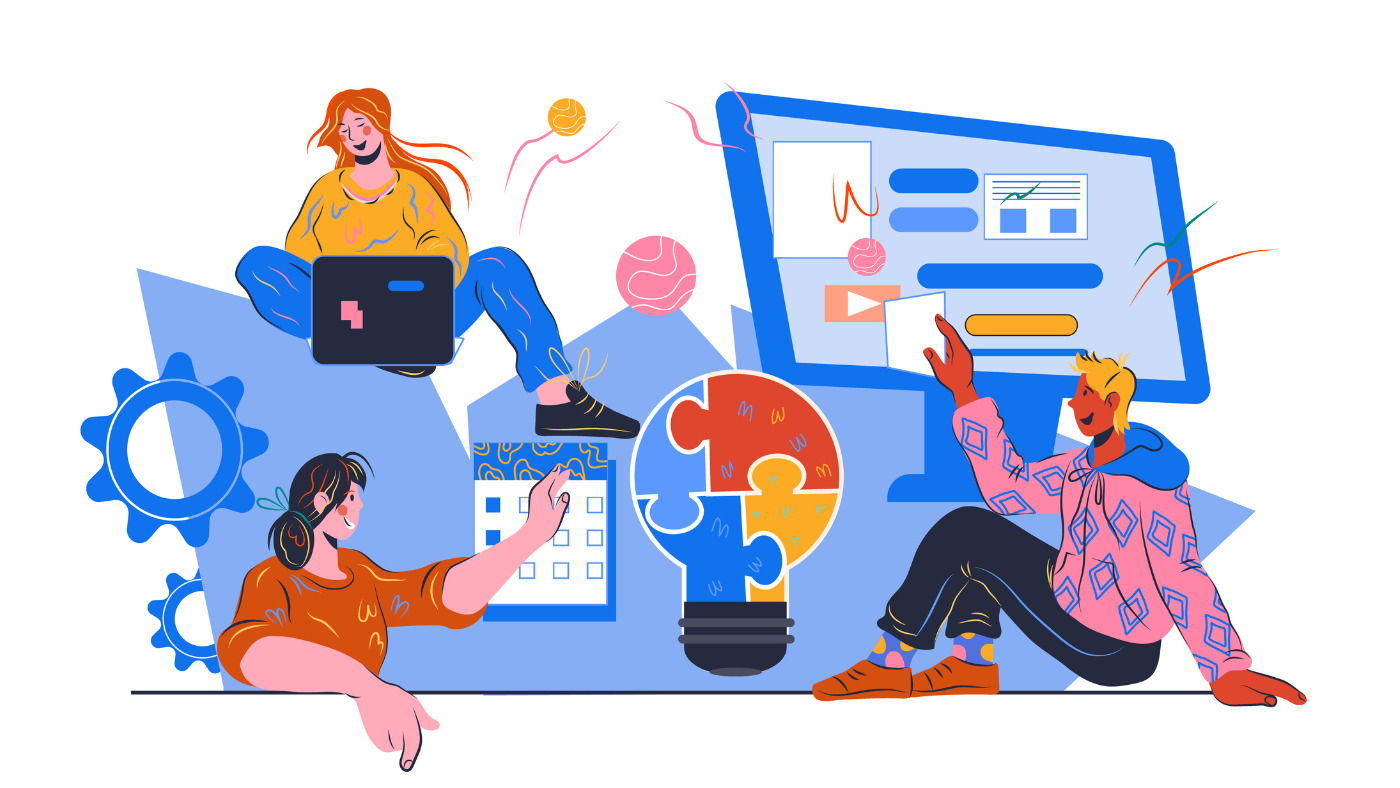New Work: A Balancing Act between Innovation and Social Division
Catrin Schröder-Jaross explores how New Work can foster innovation – while also risking deeper social divides if equity isn’t prioritized.

©Christian Horz | istockphoto.com
Diversity does not fail due to a lack of skills – it fails due to outdated structures. How New Work drives change and how it can also fail at the same time.
Imagine you work in a company that prides itself on its flat hierarchies and offers employees a high degree of flexibility. Yet, instead of gaining more freedom, you experience chaos: decisions take forever, no one knows who is actually responsible, and work remains undone. Welcome to Brave New Work, where grand visions do not always become reality.
The world of work is in upheaval. Everywhere, New Work is spoken of as if it is the solution to all problems: more flexible, more diverse, more human. But what happens when the new world of work does not deliver on its promises? When it does not include everyone, but instead opens new rifts? New Work is not a magic hat from which we can simply conjure the perfect workplace. It is a concept full of wonderful opportunities – but also full of risks. And if implemented incorrectly, it can cause more harm than good.
What is New Work, exactly?
The term “New Work” originates from social philosopher Frithjof Bergmann, who developed the idea in the 1970s. His fundamental thought was: work should be something that people genuinely want to do. For those who love what they do, work becomes more productive, creative, and motivates others. For Bergmann, the classic 40-hour workweek was a relic of industrialization – an inflexible model that does not meet the needs of people or the demands of modern society.
New Work builds upon and expands this idea: it is not only about making work more flexible and fulfilling, but also about creating structures that enable diversity and inclusion. And therein lies the key to a fairer workplace. However, these methods are merely tools. What matters is that they fit the corporate culture.
New Work: A common ground for diversity
1. Flexibility as a key to participation
The classic workplace has long been tailored to one ideal: employees who can fully devote themselves to their job without “distractions” from family, illness, or other obligations. This ideal has excluded many individuals – especially women, who continue to shoulder the majority of care work. But also individuals with chronic illnesses, neurodiversity, disabilities, or other challenges have often been left out.
New Work offers an alternative. Flexible work models such as remote work or flexible hours allow for a better balance between professional and private life. Especially for women, this means less pressure to choose between career and family. For individuals with health limitations or neurodiverse needs, New Work represents a work environment that adapts to their life reality rather than the other way around.
An example: a single mother who drops her children off at school in the morning can start her workday later and finish it at home in the evening. I have lived this model myself for a long time and can say from experience that it is extremely demanding. Nevertheless, this flexibility offers not only the chance to continue on the career path but is also economically sensible, as it retains talents in the company who might otherwise be lost.
However, what about those who cannot benefit from this flexibility? Care workers, production staff, retail employees – none of them have the option to work from home. While some profit from the new flexibility, others remain trapped in rigid structures. Does New Work ultimately lead to a new form of social division?
2. Remote work: Inclusion and expanding horizons
The ability to work remotely across national borders is not only a cure for the shortage of skilled workers but also a way to promote cultural diversity in companies. Teams collaborating internationally benefit from different perspectives. They can also cover on-call duties more easily when working in different time zones. At the same time, remote work offers individuals in rural areas or with limited mobility the chance to participate equally.
Remote work can also act as a catalyst for inclusion. Individuals in sensitive life phases – such as during a transition, with a chronic illness, or within the neurodiverse spectrum – benefit from the ability to work in a protected space. Home office can serve as a safe environment that allows for a focus on work without the need to constantly explain or justify oneself.
Yet, there are downsides as well: not everyone has the same conditions at home. While some sit in a quiet office, others struggle with poor Internet or a noisy environment. Is remote work truly inclusive or just an advantage for the privileged?
3. New leadership models: Co-leadership and empathy
The workplace of yesterday was characterized by authoritarian leadership styles and rigid hierarchies. Traits such as empathy, cooperation, and participation were considered “soft factors” that had little to do with success. New Work has changed the perception of skills, and this opens new opportunities for groups that have been previously marginalized. Empathy, cooperation, or communication skills, often associated with women or marginalized groups, are now recognized as central strengths.
A true game-changer is co-leadership. Two individuals share one leadership position brings several advantages. On the one hand, this allows both men and women to take parental leave or assume care responsibilities without jeopardizing their careers. On the other hand, it also gives single parents the opportunity to take on leadership roles without having to tear themselves between family and work.
An example: a company implements co-leadership in its department management. While one manager takes two months of parental leave, the other holds the position. Afterward, they swap roles. The outcome? Both can develop professionally and personally, and the company benefits from two perspectives and a broader pool of experiences.
4. Agile teams: Responsibility independent of characteristics
Agile teams are a central component of New Work. They work self-organized, which means that responsibility is distributed among all team members regardless of gender, age, origin, or other characteristics. In agile teams, it is the best ideas or the most expertise that counts, not who has the loudest voice or holds the highest title. For instance, in Planning Poker, a method to estimate task effort, every voice is equal, regardless of whether it comes from a junior or senior member.
Agile teams create an environment where everyone can contribute their competencies without being hindered by rigid hierarchies or biases. This not only makes work more efficient but also ensures that people who are often overlooked in traditional structures become visible and appreciated.
Criticism of New Work: A new form of division?
Despite New Work’s promising offerings, there is legitimate criticism that cannot be ignored. While New Work may initially appear as a concept of liberation and equality, in practice it can create new forms of inequality and division. Particularly problematic is that many of the challenges associated with New Work contribute to classism – the discrimination based on social background, education, or professional status.
How New Work can reinforce classism:
- Exclusion through work models: Flexible work models like remote work are not accessible to everyone. While knowledge workers benefit from the new flexibility, individuals in professions like nursing, production, or retail remain trapped in rigid structures.
- Self-organization without power: Agile teams and flat hierarchies are intended to give employees more responsibility. However, in practice, power often remains with management or is replaced by unclear structures.
- Digitalization and barriers to access: Not all employees have the same conditions to benefit from digital tools. Individuals with lower technical affinity or without access to high-quality technical equipment can quickly fall behind.
Most critically, this inequality deepens the divide between privileged and less privileged professional groups, not only within companies but also in society at large.
Conclusion: New Work – Opportunity or amplifier of inequality?
Should we therefore bury the idea of the beautiful new world of New Work? Absolutely not, but we should definitely take off the rose-colored glasses and face reality.
New Work is not a magic formula. It is a tool – and like any tool, it only works when it is used consciously and inclusively. It is not enough to offer swanky offices and home office days. What matters is whether all employees genuinely benefit from these new structures – regardless of profession, background, or access to resources.
Companies must ask themselves:
- Is our understanding of New Work broad enough? Or do we unwittingly create new exclusions – for example, for individuals in professions that are hard to make flexible?
- Particularly where rigid structures have previously dominated, such as in nursing or production, creative responses are needed. Hybrid models, desired shifts, flexible job rotation, or digital tools for scheduling can provide real relief. Self-organized teams and participatory leadership in part-time models open new avenues for greater personal responsibility and participation. What can be automated, especially documentation or administrative tasks, should be automated, leaving more time for direct work with people.
But structure alone is not enough. New Work also requires a culture based on trust, error tolerance, and genuine openness to ideas and development. Especially in high-pressure areas like nursing, this is not an option – it is a prerequisite.
For sustainable change, a culture in which feedback is welcome, mistakes are seen as learning opportunities, and new ideas are genuinely given room is necessary. This isn’t just an option in nursing, it’s a prerequisite.
New Work is an opportunity – but only if we use it correctly. It is up to us to create a working world that truly works for everyone – not just for the privileged.
📚 Citation:
Schröder‑Jaross, Catrin. (August 2025). New Work: A Balancing Act between Innovation and Social Division. dotmagazine. https://www.dotmagazine.online/issues/new-work-and-diversity/new-work-innovation-social-division
Catrin Schröder-Jaross has 25 years of experience in the IT industry, working in various fields and roles. As a woman in IT, she advocates for diversity and inclusion, contributing through initiatives like Haecksen, the ReDI School, and cryptoparties. She also co-hosts the podcast “Mind The Tech: Cyber, Crime, Gesellschaft”, which explores the intersection of technology, society, and security.
Please note: The opinions expressed in articles published by dotmagazine are those of the respective authors and do not necessarily reflect the views of the publisher, eco – Association of the Internet Industry.
FAQ
What is New Work, and how does it differ from traditional work models?
New Work, a concept rooted in the ideas of philosopher Frithjof Bergmann, emphasizes work that is meaningful to individuals. It contrasts with traditional models by promoting flexibility, purpose, and inclusion over rigid schedules and top-down hierarchies.
• Moves beyond the 40-hour industrial workweek
• Encourages self-motivation and autonomy
• Adapts to modern societal and workplace needs
How can New Work promote diversity and inclusion in the workplace?
By offering flexible hours and remote options, New Work can support people often excluded from standard work setups—such as caregivers, individuals with disabilities, or neurodivergent employees.
• Creates equitable access to career progression
• Reduces pressure on employees to conform to a single model
• Recognizes diverse life realities
What are some risks of implementing New Work?
As Catrin Schröder-Jaross of adesso SE points out, if New Work isn’t aligned with a company’s culture or structure, it can create confusion, delay decisions, and even heighten social divisions.
• Flat hierarchies can blur responsibility
• Flexibility may not apply to all roles equally
• Inequality can grow if only certain employees benefit
Why is leadership style critical in New Work environments?
New Work redefines leadership by valuing empathy, collaboration, and shared responsibility. These traits support inclusive environments where different communication and working styles are respected.
• Moves away from authoritarian models
• Values emotional intelligence and teamwork
• Encourages participatory decision-making
Is remote work always inclusive under New Work models?
Not automatically. While remote work enables participation for many, Catrin Schröder-Jaross warns that it can also favor those with better resources, such as stable Internet or quiet workspaces.
• Home setups vary widely in quality
• Can deepen privilege gaps
• Needs structural support to be truly inclusive
How can companies ensure that New Work models are economically viable?
New Work can help companies retain talent by supporting employees with caregiving duties or health needs. As Schröder-Jaross notes from personal experience, flexibility—though demanding—can prevent costly attrition.
• Supports long-term employee retention
• Preserves institutional knowledge
• Enhances workforce stability





